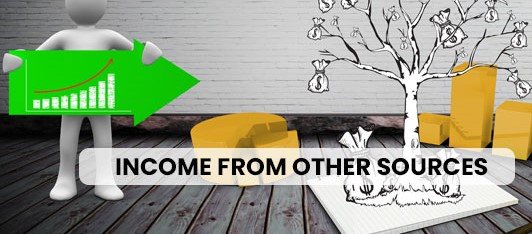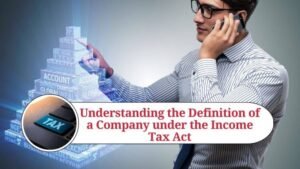Taxation laws in India are complex and ever-evolving. One such important provision is Section 59 of the Income Tax Act, which deals with profits chargeable to tax. If you’re dealing with recovered income or benefits related to previously deducted expenses, it’s essential to understand how Section 59 impacts your tax liability. This guide breaks down the key elements of Section 59 and the legislative amendments that have shaped its current structure.
What is Section 59 of the Income Tax Act?
Section 59 plays a crucial role in determining profits chargeable to tax. It specifically extends the provisions of Section 41(1), which covers the recovery of business or professional income, to other sources of income. Essentially, if an assessee recovers any expense or allowance previously deducted, such recovery is chargeable to tax, even if the income source has changed.
For example, if a business claims a deduction on an expense in one year and later recovers that expense, the recovered amount must be included in the taxable income for the year it was recovered. This ensures that any undue advantage of double deductions is avoided.

Key Provisions of Section 59
1. Extension of Section 41(1) to Income from Other Sources
The most important provision of Section 59(1) is that it mirrors the rules laid down in Section 41(1) for recovering deductions, but it applies to income from other sources as well. The principles that apply in computing business income under Section 41(1) are extended to other sources of income, ensuring uniformity in tax treatment.
2. Historical Amendments to Section 59
Section 59 has undergone significant legislative changes over the years to better align with India’s evolving tax landscape. Below are the key amendments:
- The Taxation Laws (Amendment) Act, 1970: This act inserted Section 59(3), which extended the rules for balancing charges related to depreciable assets to income from other sources. This was particularly relevant for leasehold buildings used in business or other income-generating activities. The amendment became effective from April 1, 1971.
- The Taxation Laws (Amendment & Miscellaneous Provisions) Act, 1986: This amendment saw the removal of Sections 58(2) and 59(3) from the statute, effective from April 1, 1988. These sections were originally created to handle complex cases involving balancing charges, particularly in cases of leased properties.For more details on the scope and effect of these amendments, one can refer to Departmental Circular No. 469, dated 23-9-1986, which explains these changes in the context of Section 32 of the Income Tax Act.
3. Scope of Section 59: Broadening the Tax Net
Section 59 widens the scope of taxable income by ensuring that any recovered deductions, whether from business income or other sources, are brought back into the tax net. This is particularly relevant for individuals or entities that may have written off certain expenses in the past, only to recover them later.
The provisions of Section 41(2A) (operative until March 31, 1988) were applied similarly to business income. This included balancing charges (the amount recovered upon sale or transfer of a depreciable asset), which were incorporated into income computations to ensure accurate taxation.
Key Case Laws Related to Section 59
Several important case laws have interpreted the provisions of Section 59, which can help taxpayers understand how the law is applied in practice. Some noteworthy cases include:
- Nandlal Bhandari & Sons (P.) Ltd. v. CIT (1963): This case helped clarify the application of Section 59 in cases involving balancing charges. It was a key precedent for future amendments to the Income Tax Act, particularly the Western India Oil Distributing Co. Ltd. v. CIT (1971) case, which expanded on these principles.
- CIT v. Western India Oil Distributing Co. Ltd. (1971): This case further solidified the interpretation of Section 59, especially in situations involving depreciable assets and income recovery.
Recent Changes and Application of Section 59
Although Section 59(2) and Section 59(3) have been omitted as of 1988, Section 59(1) continues to apply to cases where income is recovered after claiming deductions in earlier years. This ensures that any undue benefit from recovered income is taxed, whether it arises from business activities or income from other sources.
FAQs on Section 59 of the Income Tax Act
1. What is Section 59 of the Income Tax Act?
Section 59 extends the principles of Section 41(1) to income from other sources, ensuring that any recovered deductions or allowances are included in taxable income, even if the source of income has changed.
2. What are balancing charges in Section 59?
Balancing charges refer to the amount recovered on the sale or transfer of a depreciable asset, which must be included in the taxable income as per Section 59.
3. Are there any recent amendments to Section 59?
Section 59(2) and Section 59(3) were omitted in 1988, but Section 59(1) remains applicable. The most recent amendments primarily occurred in 1986.
4. How does Section 59 impact income from other sources?
Section 59 ensures that income from other sources is treated similarly to business income in terms of recovering previous deductions. This prevents double deductions and tax avoidance.
5. How do case laws interpret Section 59?
Important case laws such as Nandlal Bhandari & Sons v. CIT (1963) and Western India Oil Distributing Co. Ltd. v. CIT (1971) have shaped the interpretation of Section 59, particularly in cases involving balancing charges.
For more detailed insights on tax provisions, visit our blog on Income Tax Laws where we regularly update information on amendments, case laws, and more.
Conclusion: Why Understanding Section 59 is Important
Understanding Section 59 of the Income Tax Act is crucial for both individuals and businesses. Whether you’re recovering expenses from prior deductions or navigating the complex rules around balancing charges and depreciable assets, knowing how this section works can help you avoid penalties and ensure full compliance with tax regulations.
By keeping track of recovered income and ensuring it’s included in your total taxable income, you can avoid potential disputes with tax authorities and maintain a clean financial record.



